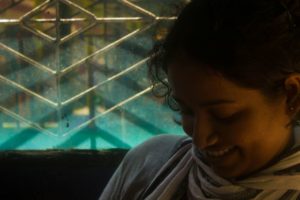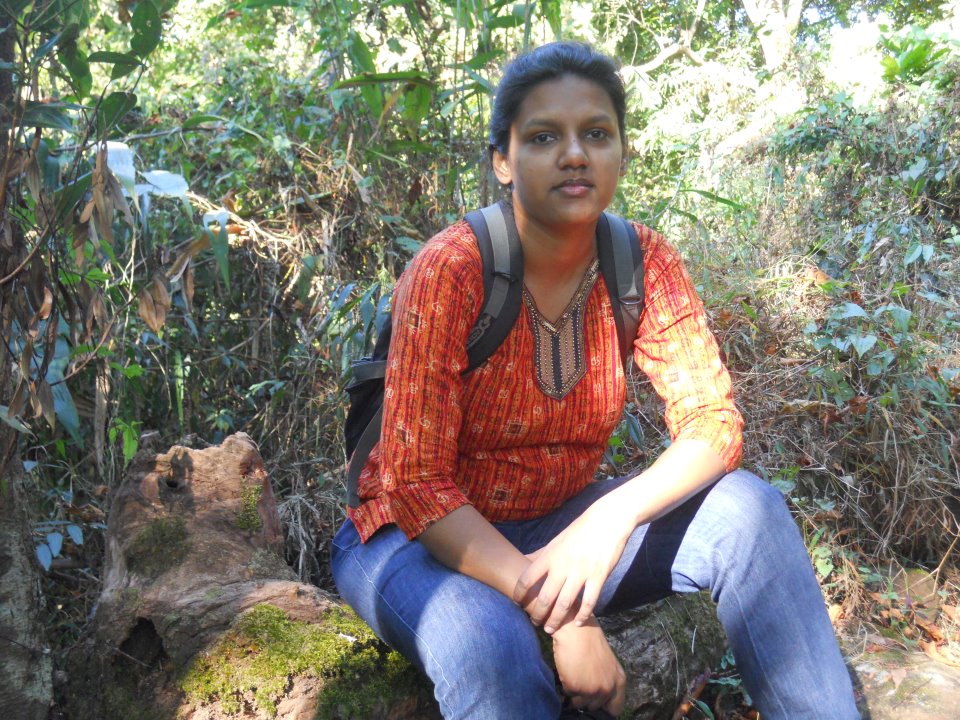Lakshmi Parvathy
 My earliest encounter with caste was when my immediate family showed discomfort to disclose our caste. The rest of our world’s curiosity never ended there, they kept asking directly and indirectly and we kept laughing it off. When asked why we had to be elusive about it, I was told that the world wouldn’t be the same if others knew that we were Dalits. Anticipating hostility and ridiculing, I conformed to the rule of not disclosing my caste identity. Although my caste details were disclosed as a technicality when I was admitted to school and I had to stand up when names were called out and stipends handed over, I sought solace in the fact that fellow students from other divisions wouldn’t know about my caste.
My earliest encounter with caste was when my immediate family showed discomfort to disclose our caste. The rest of our world’s curiosity never ended there, they kept asking directly and indirectly and we kept laughing it off. When asked why we had to be elusive about it, I was told that the world wouldn’t be the same if others knew that we were Dalits. Anticipating hostility and ridiculing, I conformed to the rule of not disclosing my caste identity. Although my caste details were disclosed as a technicality when I was admitted to school and I had to stand up when names were called out and stipends handed over, I sought solace in the fact that fellow students from other divisions wouldn’t know about my caste.
But people’s curiosity never ended and they finally found out! Speculations and discussions were held within our family as to how the information leaked. May be someone had met an old relative of ours? Or maybe, my school documents revealed it? But surprisingly enough, we enjoyed a bit of relief as we were told, “You don’t look like Dalits”. Consoled by that small distinction, we stood apart, different from the ‘Dalit-looking Dalits’. It was rather astonishing to the world, as to how my parents could own ten cents of land and build a house in it, while Krishnan Panar, a person from our own community, still sang Panapattu in the month of Karkidakam to make his ends meet. After years of comfort of being an outlier, I encountered my caste identity much later, in the years of my graduate studies. That was when my political self couldn’t stand any more, the deep rooted caste prejudice when someone said that ‘You don’t look like a Dalit’ or that I had acquired the qualities of an ‘upper’ caste person despite being a Dalit.
I was one of the many beneficiaries of affirmative action, which gave me, like many others, an opportunity to pursue my graduation in one of the premier institutes of the country. But getting an admission only marked the beginning of learning the art of survival and succeeding. The quality of life spent there was more like a constant struggle with many concerns, including the ease of communication, the ability to build a reliable social network, redefining the sense of self-worth, ability and feasibility to pursue my interests and the like.
After the tragic death of research scholar RohithVemula, his words triggered intense debates on casteism in institutes of higher education. Discourses were reduced to a binary of an institution versus Dalits. But there are nuances to it, certainly. For instance, in my experience as a Dalit student, the institution alone was not the important player. My peers, cliques and crowds too played an important role. Here, I would like to borrow from Pierre Bourdieu, eminent French Sociologist, to explain how that happens.
Bourdieu would argue that in the education system, the language plays a central role in reproducing social inequalities from one generation to the next. Bourdieu looks analytically at an intersection of regional differences in French and standard language. He would argue that, a student who comes from the provinces to Paris to do the University studies feels intimidated amongst peers. Bourdieu enquires into what exactly this intimidation is and where it exists. He describes it as a ‘symbolic violence’ that does not imply an act of intimidation on the part of the standard French Speaker. But the standard French speaker’s skill to handle the language and their reaction to the provincial dialect make the newcomer feel intimidated. (Joseph 2006:47) Bourdieu adds that the non-standard speaker is involved in co-creating the intimidation in the sense that,
“The intimidation can only be exerted on a person predisposed to feel it, whereas others will ignore it. The cause of timidity lies in the relation between the situation or the intimidating person (who may deny any intimidating intention) and the person intimidated, or rather, between the social conditions of production of each of them”. (Bourdieu, 1991:51 in Joseph 2006)[i]
Here, Bourdieu is emphasising on the role of language in reproducing social inequalities. However, the role of other factors such as cultural capital which includes skills, mannerisms, material belongings, accent etc and the social capital which includes reliable social networks and the symbolic capital or the sense of self-worth of individual cannot be undermined. Thus, all these factors add on to define inequality at the outset and additionally the symbolic violence acts to reproduce the social inequalities further. Although caste need not be the sole category that can be employed to understand symbolic violence, it is definitely an important category with which one can understand the ramifications of symbolic violence. This intimidation and symbolic violence has the potential to make individuals silent, fearful of speaking up, further alienate the self, internalise the silence and validate the internalisation in a context where social inequalities are reproduced across generations. It might be easily possible in the case of caste because for centuries now Dalits were being made silent, not allowed to speak, not allowed to stand in the way, in the vicinity and visibility and sometimes do not even come out in the daylight, as in the case of Nayadikal. I was certainly intimidated in my experience as a Dalit student, and it took time for introspection and inspiration from Babasaheb to speak up about it. Babasaheb wrote in the first issue of The Mook Nayak – The Leader of the Silent,
“the effect of social inequality on the people called untouchables has been devastating. The vast masses of untouchables are undoubtedly sunk deep into the confluence of feebleness (helplessness), poverty and ignorance. Meanness produced by their slavery with which they have been used to for many years is keeping them backward. They think that the wretched condition in which they are placed is their lot and it is god ordained. This thinking can be removed from their mind only by imparting knowledge (education) to them. But the costly education is a purchasable commodity and the untouchables because of their poverty are unable to purchase it and even if few of them are able to purchase it they are not allowed to enter the schools because the stigma of untouchability is permanently attached to them… The stigma of untouchability has restricted their freedom of profession and therefore, their efforts to remove their poverty are not fructifying… The untouchables have no knowledge (education) because they are poor and they are powerless because they have no knowledge. This is a correct logic but it should not be forgotten that it reduces the importance of those who are fighting against the practice of untouchability. The real humanity lies in breaking the barriers.”[ii]
Here, Babasaheb was making a call for sharing Dalit experiences, suggesting remedies against the injustice done to Dalits and also to discuss the ways and means for our progress in future. The attempt here has been to engage with the so-called ‘privilege’ of not looking like a ‘Dalit’, debate it, understand it, gain insights from it and act more sensitively. As I talked to more people from my community and outside of it, I found it all the more important to write this piece. People outside the community were unaware about the nuances of experience and the people from community were not open to discuss- possibly being very cautious, afraid of their world becoming even more unfair to them. Or, they want to stay in their place, enjoying the little ‘distinctions’ that might have been bestowed upon them.
Babasaheb was a scholar as much as a man of action. His writings and speeches presented a hitherto-unprecedented analysis about caste, its origin, mechanism, development. He was also an impeccable leader and an exemplar. Through his deep reading, clarity of thought and arguments he encountered the oppressive caste practices. Emphasising the importance of education, Babasaheb said that,
“The backward classes have come to realize that after all education is the greatest material benefit for which they can fight. We may forego material benefits of civilization but we cannot forego our rights and opportunities to reap the benefits of the highest education to the fullest extent. That the importance of this question from the point of view of the backward classes who have just realized that without education their existence is not safe.”[iii]
He might have suffered a lot during his time as a student with more overt forms of discrimination. Yet, he has succeeded to well educate himself and has set the bars high for anyone to follow. I reiterate, Babasaheb was a scholar as much as a man of action.
References:
[i] Joseph, John Earl. Language and politics. Edinburgh University Press, 2006. Page.47
[ii] Taken from the first editorial written by Babasaheb originally written in Marathi for the very first issue of Mook Nayak published in January 1920. This translation was first published in July 2010 by Dr. Babasaheb Ambedkar Research Institute in Social Growth, Kolhapur. Translated by Dr. B.R. Kamble. Source: http://roundtableindia.co.in/index.php?option=com_content&view=article&id=8158:from-the-pages-of-mook-nayak&catid=116&Itemid=128
[iii] Vasant Moon, Dr. Babasaheb Ambedkar : Writings and Speeches Vol. 2. Government of Maharashtra (1982)
~

